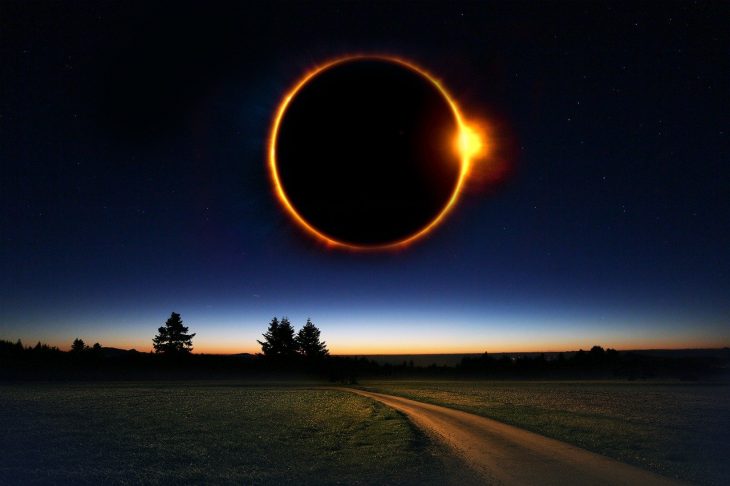
Eclipses are one of the most awaited natural phenomena in the world. Get to know more about it with these eclipse facts!
- There are at least 2 solar eclipses per year on our planet.
- Every one and a half years, one total eclipse happens.
- There are only up to 5 partial, annular, or total solar eclipses per year.
- 7 minutes and 30 seconds is the longest duration for a total solar eclipse.
- In the North Pole and South Pole, people can only see partial solar eclipses.
- A solar eclipse occurs when the Sun, the Earth, and the moon, align.
- The solar eclipse happens when a shadow from the moon covers a part of the earth and blocks sunlight.
- The visibility of the partial solar eclipse is up to 4,830 kilometers from its position.
- Eclipse shadow moves at 1,770 kilometers per hour at the equator.
- As totality approaches, shadow bands are often seen on the ground.
- Shadow bands are often seen on the ground as totality approaches.
- Wild animals get confused during a total eclipse and would prepare for sleep.
- The temperature drops up to 20 degrees during a total eclipse.
- One can see a lunar eclipse from any location on our planet once the moon is visible.
- Lunar eclipses can last more than one hour.
- There would be a total solar eclipse every new moon if the moon were in a perfectly circular orbit.
- If the sun is not covered by the moon by 90% or more, a total solar eclipse is not noticeable.
- By studying the ancient records solar eclipses, astronomers detected a 0.001 second per century slowing down in earth’s rotation.
- Eclipse starts at sunrise in its tract and ends at sunset about halfway around the earth from the start point.
- There are 4 types of a solar eclipse (partial eclipse, annular eclipse, total eclipse, and hybrid eclipse)
Eclipse Facts Infographics
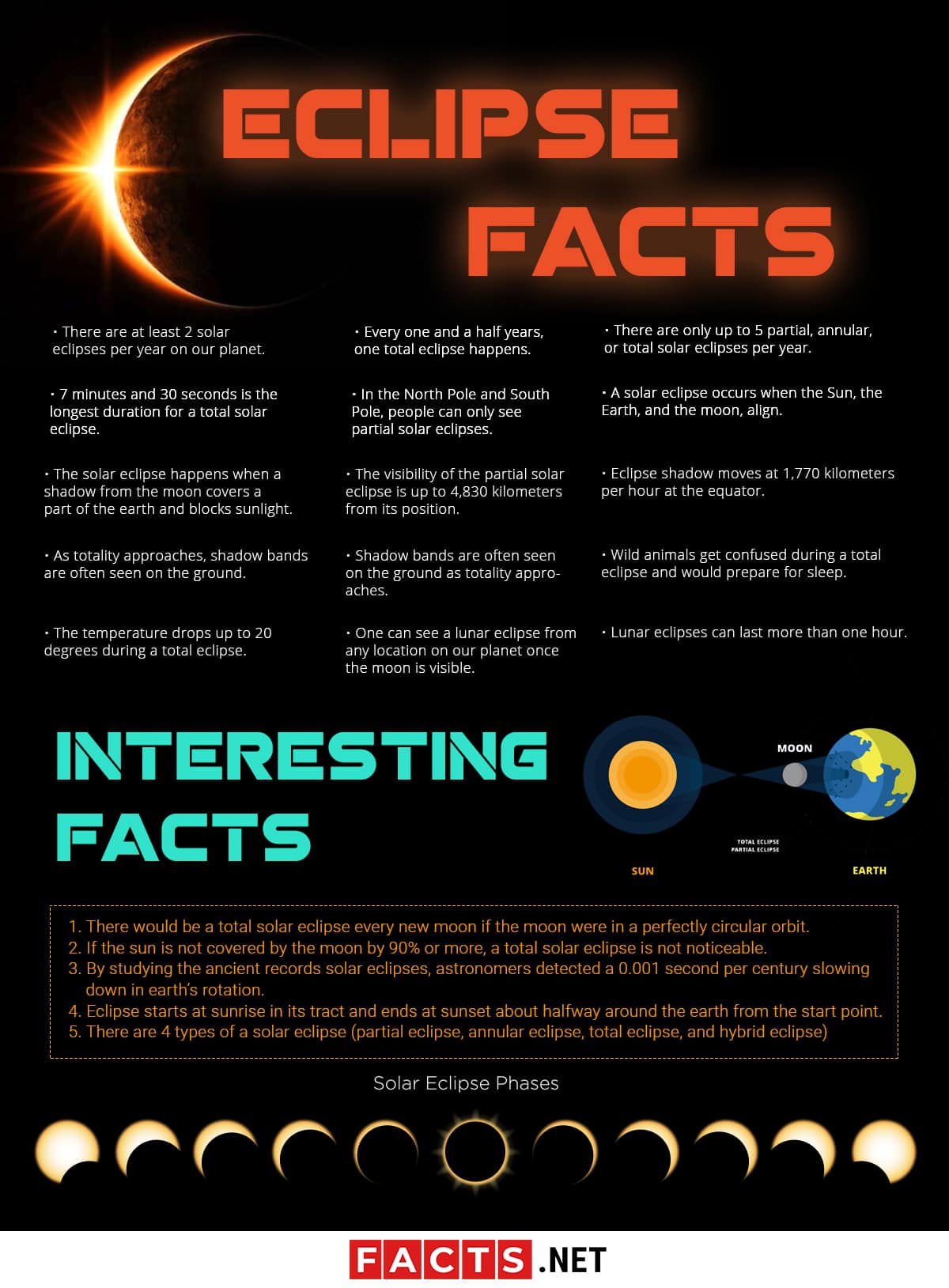
The saros period tells us when the next eclipse is.
The saros is a period of 223 synodic months (about 18 years or 6,585 days). Astronomers use the saros to forecast eclipses of the moon and sun. One saros period or 18 years after an eclipse, the moon, earth, and the sun comes back around the same relative geometry. They are also about in the same line, and almost the same eclipse will take place.
The total solar eclipse is a complete sun block out.

A total solar eclipse happens when the moon totally blocks the solar disk. A full solar eclipse is almost as dark as night and among other eclipses, the total solar eclipse is the only time when it is safe to look straight at the sun.
The annular solar eclipse happens when the moon is far from its usual orbit.
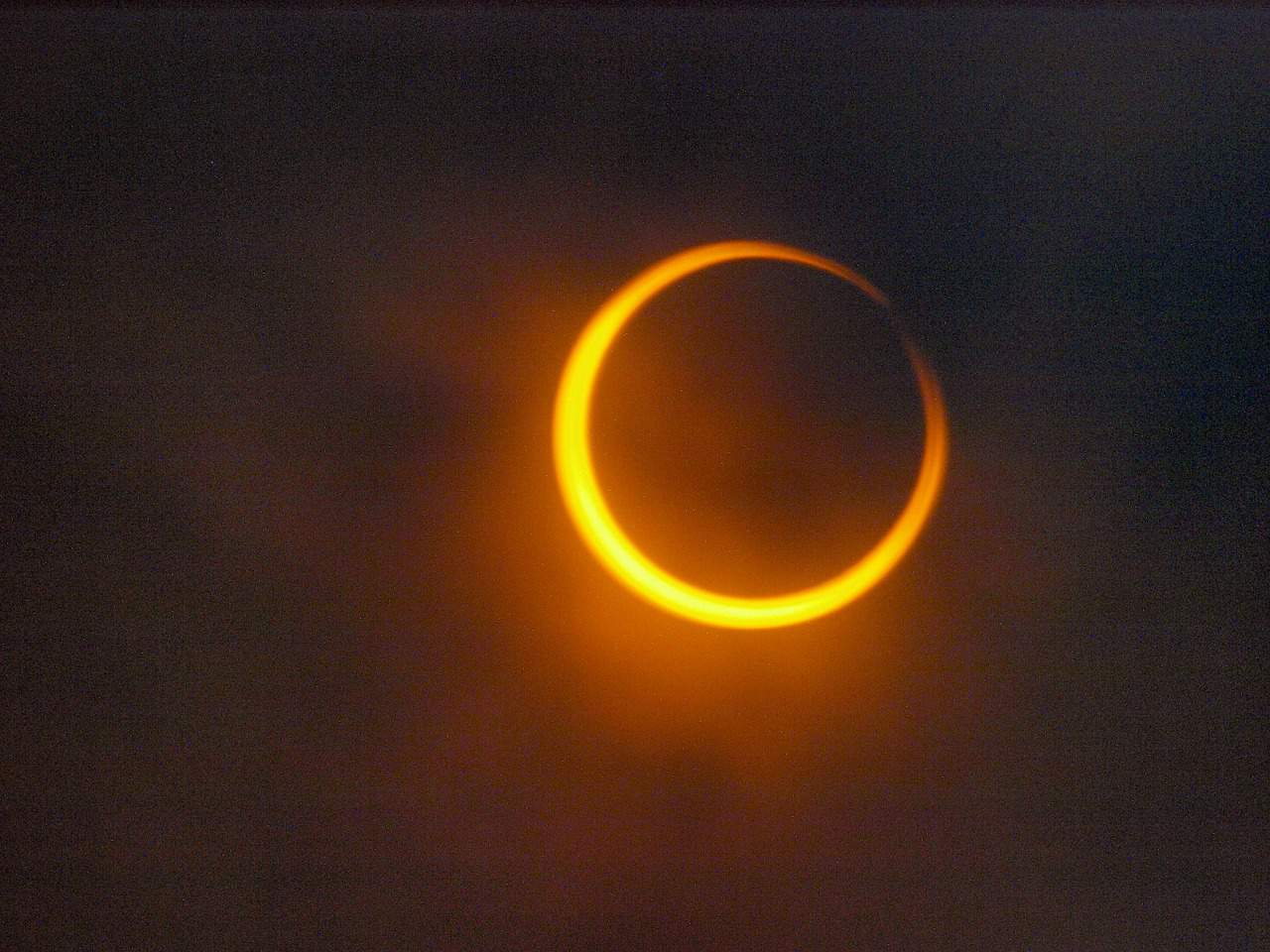
When the Moon is far away in the usual orbit, it will be not enough to completely cover the sun’s disk. This is the annular eclipse and it usually lasts between 5 to 6 minutes. Observers must not look directly towards the sun during this event. Again, the main difference between total and annular eclipse is that the moon is further away from the earth during an annular eclipse. Annular comes from the Latin word annulus that means ring.
Be careful when you watch the partial solar eclipse.
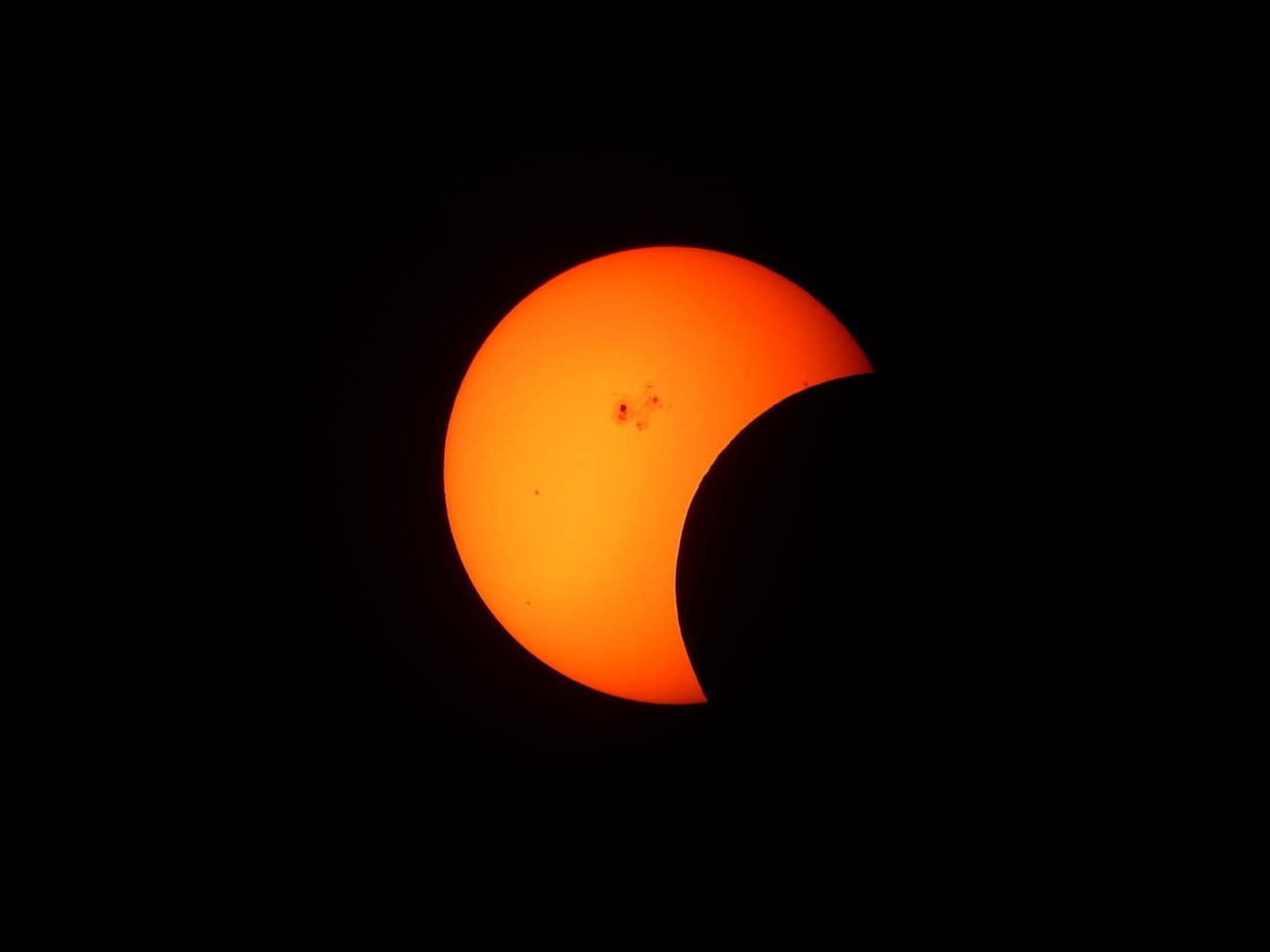
The partial solar eclipse happens when the moon does not block the whole solar disk. Observers must be careful of watching the partial solar eclipse as severe eye damage or even blindness may result in staring at it.
The hybrid solar eclipse is rare.
The last kind of eclipse is the hybrid eclipse and is comparatively rare. The hybrid eclipse changes its appearance as the moon’s shadow moves across the earth’s surface. During a hybrid solar eclipse, the earth’s geometry brings some sections of the eclipse path into the moon’s umbra. The umbra is the dark central part of a shadow. Different sections from earth may see different angles such as total, annular, or partial solar eclipse.
Look at a solar eclipse safely.
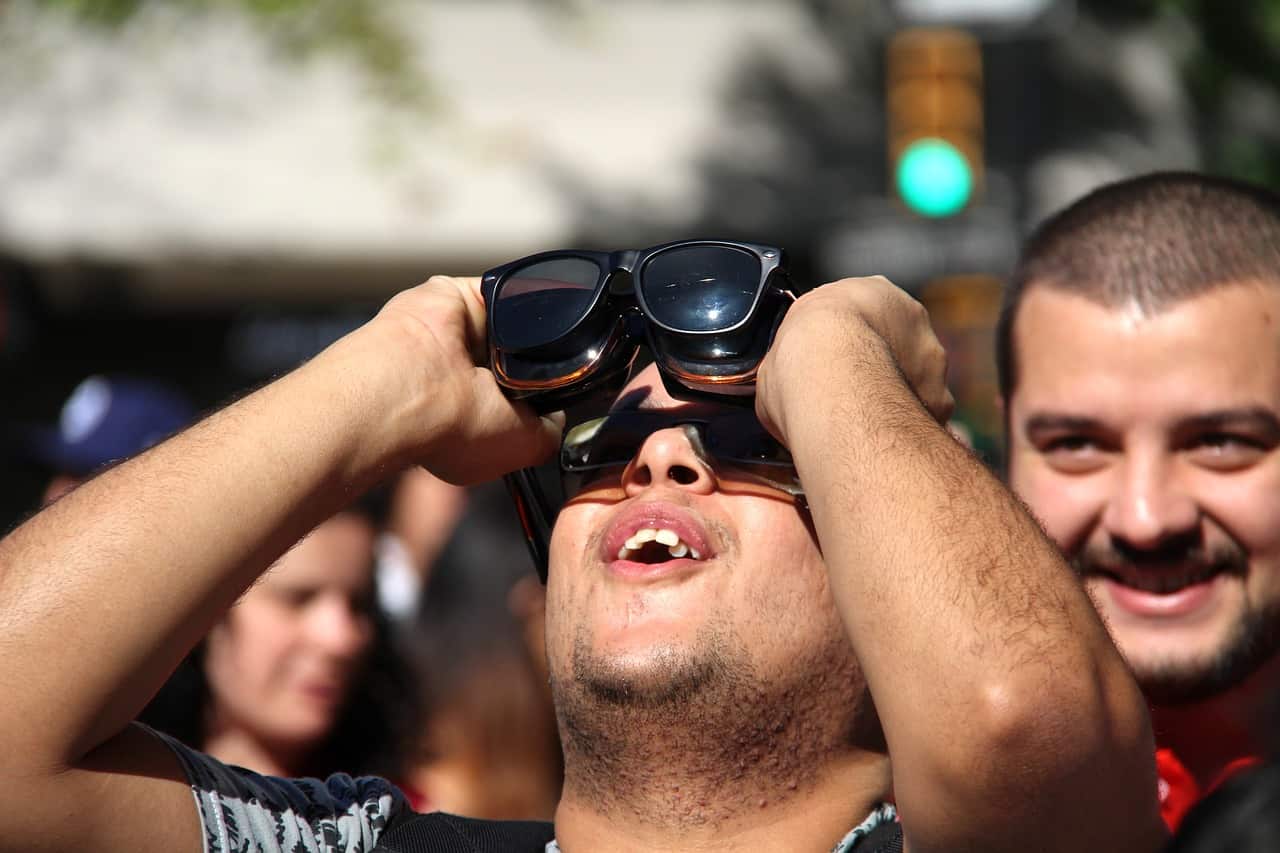
Staring at the solar eclipse can cause eye damage and blindness so one must use a solar filter telescope. It is one of the best tools to use for solar eclipse viewing and it will enhance the clarity of the scenery. If there is no available solar lifter telescope, a commercial solar eclipse glasses or welder’s glass can also do the job.
The shadow bands are wavy lines that show before or after a total solar eclipse.
Before or after a total solar eclipse, there are wavy lines of alternating dark and light traveling in parallel at coloured surfaces. These are shadow bands. Refraction by Earth’s atmospheric turbulence of the solar crescent cause these.
During the 2017 Great American Eclipse, 48 US states saw a solar eclipse.
On August 21, 2017, a solar eclipse was visible within a band that crossed 48 states in the United States. It passed from the Pacific to the Atlantic coast. People called it “The Great American Eclipse“. People also planned and did some marriage proposals and weddings in this rare opportunity.
Eclipse totalities don't have the same lengths.
This is due to the total phase of solar eclipse varies in time. Since Earth is moving in the orbit, it is not always at the same distance from the sun and the same goes for the distance of the moon from Earth. The distance between the sun and the earth varies by 3 percent and the moon to the earth distance by 12 percent. The effect is that the moon will appear 7 percent larger to 10 percent smaller than the sun.
The magnitude of the eclipse is the area of the sun's diameter covered by the moon.
The fraction of the angular diameter of a celestial body at the eclipse is called “Magnitude of the Eclipse”. The magnitude of the annular or partial solar eclipse is between 0.0 and 1.0, while the magnitude of a total solar eclipse should be greater than 1.0 or equal and the cycle of the solar eclipse magnitude is one hundered fifty-nine years minus seventeen days. The eclipse magnitude is the fraction or “area” of the sun’s diameter that is covered by the moon.
Eclipse come from the Greek word ekleipsis.
Eclipse comes from the ancient Greek noun Ekleipsis, that means “the downfall, “the abandonment” or “the darkening of a heavenly body” and obtained from the verb Ekleípō that means “to abandon”, “to darken” or “to cease to exist”, combined with the prefix from the preposition Ek, “out” and the verb (leípō), that means “to be absent”.
One of the longest eclipse will occur on July 16, 2186.
On July 16, 2186, there will be a solar eclipse that is going to be one of the longest for thousands of years. The eclipse is expected to take a 4-minute pass over the Galapagos Islands, the Southern tip of Espanola Islands, the Northern tip of Ecuador with a total of 3 minutes and 26 seconds, Isla Santa Rosa, Central Colombia 4 minutes and 50 seconds, Bogota, Central Venezuela, and Northern Guyana 7 minutes and 4 seconds.
Eclipses on Mars are common.
On the planet Mars, hundreds of solar eclipse happen each year. But because Mar’s moons are smaller (Phobos and Deimos), only partial solar eclipses are attainable. There are also times when Deimos is eclipsed by Phobos (moon-to-moon).
Uranus, Saturn, Neptune, and Jupiter often experience eclipses.
Because they have many moons, Uranus (27 moons), Saturn (62 moons), Neptune (14 moons) and Jupiter (79 moons) very often experience eclipses. Jupiter has the most frequent eclipses because of its four large moons and a low axial tilt, making eclipses more common as these bodies pass through the shadow of the larger planet. Take note that Jupiter is 1,300 times larger than Earth, thus, the eclipse appeared to be like dots.
Mercury and Venus cannot have an eclipse.
The planet Mercury and Venus cannot have an eclipse because they do not have a moon but Mercury and Venus have been spotted to transit across the sun. Each century, Mercury averages 13 transits and Venus occurs in pairs separated by an interval of 8 years and each occurrence happens less than once a century.
Pluto experience eclipses with its moon Charon.
Pluto has 5 moons and Charon as the largest has recorded numerous eclipses for more than one-hour per eclipse. Because of the huge tilt of Pluto’s moon Charon, it orbits the long-year of Pluto and eclipses happen only twice per century.
In the far future, there will be no more total solar eclipse.
About 600 million from now, there will no more total solar eclipses because of tidal friction. The moon is moving away from our planet at a rate of four centimeters per year, due to the tidal interaction between the Earth and the Moon.
China produced the first astronomical recordings of solar eclipses.
China produced the first astronomical recordings of solar eclipses, carve in pieces of bone and shell called “oracle bones,” from around 1050 B.C. or earlier. In ancient China, natives would traditionally play drums to scare of the “heavenly dog” that they believed to be eating and consuming the sun. The Chinese word for a solar eclipse is Shih that means “to eat”.
Sir Arthur Eddington Expedition helped confirm Albert Einstein's theory.
In 1919 Sir Arthur Eddington‘s expedition to observe a total solar eclipse from the island of Príncipe, the northern major island of the country of São Tomé and Príncipe, and west coast of Africa, helped confirm Albert Einstein’s general theory of relativity. As stated by Albert Einstein’s work, gravity from massive objects should warp the fabric of spacetime and so bend light.
Christopher Columbus used the solar eclipse to survive.
When Christopher Columbus, an Italian explorer and colonizer, sailed the new world, he brought with him an almanac. The almanac was an annual calendar containing important dates and statistical information such as astronomical data, containing about the upcoming solar eclipses. On his final voyage, Columbus was shipwrecked in Jamaica and got into difficulties with the natives that would not agree to give food and water or kind of help for him and his crew. Christoper Columbus remembered that a total eclipse is bound to happen on the evening of February 29, 1504, and threatened the natives that he will cut off the moon’s light. As the eclipse occurs, the anxious natives finally agreed to help Christopher Columbus.
Eclipses are mysterious and magical, so we hope that we made it less mysterious with these eclipse facts. May these eclipse facts make you appreciate eclipses more!
Was this page helpful?
Our commitment to delivering trustworthy and engaging content is at the heart of what we do. Each fact on our site is contributed by real users like you, bringing a wealth of diverse insights and information. To ensure the highest standards of accuracy and reliability, our dedicated editors meticulously review each submission. This process guarantees that the facts we share are not only fascinating but also credible. Trust in our commitment to quality and authenticity as you explore and learn with us.
